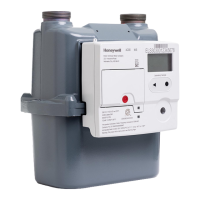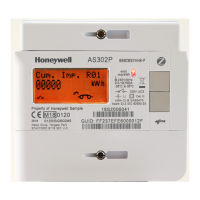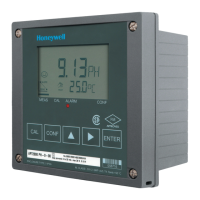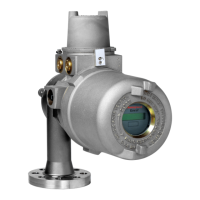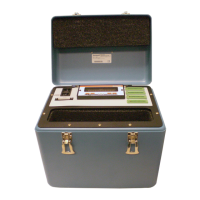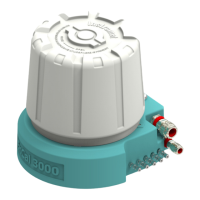120
10.3.4. Servicing the valves
10.3.4.1.
Self-Monitoring and Manual Testing
If any solenoid valve fails to switch or open, it will cause a change in absolute pressure or
the infrared spectrum sufficient to generate a Service Status message in most cases.
During scheduled PM services or following any Service Status messages that might
indicate a sampling problem, check the valves using manual tests (pneumatic tests).
10.3.4.2.
Servicing the sample valves
The Sample Valves are mounted into 10-port manifolds, as shown in Figure 5. They are
not expected to wear out and have no replacement schedule. However, a valve can
always fail or develop a problem.
Since the valves mount upside down, there is a possibility that the screws holding the
valves to the manifolds might loosen over time. Also, they have an internal orifice that
controls and balances the bypass flow. If the orifices plug, they limit the bypass flow and
the response time. The in-line filters stop most particles that can plug the orifices.
Sampling without a filter on any point or drawing in dirty, corrosive gases increases the
possibility of plugging an orifice. Use the manual checks and tests, Sample valve tests, to
identify any problems. Follow the service instructions in Sample valves.
10.3.4.3.
Servicing the cycle valves
The Cycle Valves are the six solenoid valves installed on a removable plate shown in
Figure 9. These valves are activated with far greater frequency than the Sample Valves.
Expect them to wear out eventually. They should be replaced every five years before
problems develop in everyday use. The valves contacting the sampled gas have Teflon
bodies, which are resistant to both corrosion and the absorption of acid gases.
Nevertheless, any of these valves can fail in everyday use. Use the manual checks and
tests, Cycle valve tests, and identify any problems. Follow the service instructions in Cycle
valves.
10.3.4.4.
Tubing
When you disconnect any internal or external tube fitting from a valve or pump, inspect
the end of the tube and the tube fitting. Look for signs of corrosion, particles, and chemical
coating. Replace tubes and fittings that show any of these signs.
Also, look for over-tight fittings that compress the tube diameter at the ferrules and create
a flow restriction. Replace the fitting and the ferrules.
Inspect internal tubing for any crimps, worn spots, and splits, especially around the fittings.
Replace defective tubes.
NOTE
Compression tube fittings like Swagelok should be turned with a wrench 1/4 turn
past finger tight. Avoid overtightening the fittings.
10.3.5. Evaluating the FTIR optical path
The modulated infrared beam inside the FTIR analyzer (optics bench) passes through
windows, reflects off mirrors, and ultimately focuses onto a 2 mm diameter detector. To

